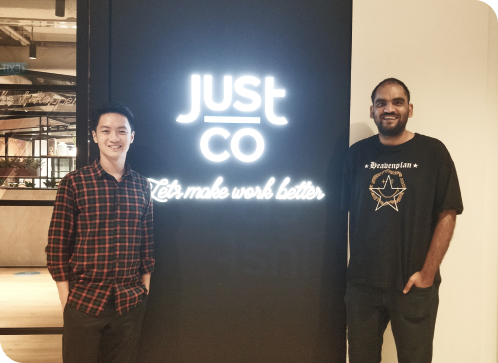Why We Invested In Brick: Seamlessly connecting consumers to embedded financial products with a single line of code

By Smita Aggarwal and Harsh Gupta
Southeast Asia is home to over half billion people with a rapidly maturing digital economy. Like the rest of the world, Covid-19 has curbed regional GDP growth but it has accelerated digital adoption. Globally in 2021, more than 500,000 new internet users came online each day for shopping, food delivery, gaming, mobility and other connected applications. In Southeast Asia, the bulk of new users came online via mobile devices.
Countries in the region, such as Indonesia, have large informal and underbanked populations; digital and mobile connectivity has become key to their survival and economic betterment.
Indonesia is home to the world’s fourth-largest population. Two decades of healthy economic growth – consistently near 5% before the pandemic hit – have helped shrink the nation’s poverty rate by about half, but the benefits of economic development have not been felt equally across the country. With populations spread out over thousands of islands, Indonesia’s physical boundaries are often mirrored in its financial system, leaving millions of people with little or no access to banking services. As a result, the informal economy is large, diverse and disparate, representing as much as 70% of the country’s total labour force.
Less than half of Indonesia’s 275 million people have a bank account. Yet inclusion in the financial system is key to driving economic growth and helping populations emerge from poverty. Without access to basic financial services, people are shut out from saving for emergencies or long-term goals. Families also can’t invest in education or healthcare or manage risks, such as lost employment. And on the macro level, entire economies suffer when potential entrepreneurs lack access to credit or insurance needed to start or expand businesses.
In the pre-digital era, bank accounts were effectively the only option for securely storing money and sending or receiving payments. But obstacles such as physical proximity, scant credit or income history, and significant fees have all barred low-income populations from attaining accounts. However, digital technology and mobile internet connections have erased physical distances and reduced costs. Today, a barrage of apps on smartphones offer a full range of financial services. According to the ADB’s Accelerating Financial Inclusion in Southeast Asia with Digital Finance report, digital technologies that promote financial inclusion hold potential to boost GDP by as much as 3% in Indonesia and up to 6% in other Southeast Asia economies.
Problem solved? Not quite. Much like Indonesia’s islands, digital applications allowing customers to earn, save, or spend are largely siloedwith complex onboarding and verification processes, holding back customer adoption.
Where’s the opportunity?
Founded in 2020, Brick is a start-up provider of financial Application Programming Interfaces (APIs). With a line of code, the company can automate and integrate data collection from a variety of sources, facilitating transactions and effectively providing a digital bridge from the informal sector to services such as payments, credit, investment and insurance.
In simple terms, Brick’s APIs act as ambassadors between different computer systems, facilitating communication and ferrying important data securely between them. The code empowers consumers to control their data and share it securely with financial service providers.
For example, an underfunded entrepreneur who seeks a loan might turn to a digital lending platform; Brick’s technology can immediately connect that platform with the user’s bank data, or gather mobile wallet or utility-payment data, to help do credit underwriting and process the application quickly. Brick is already compatible with more than 90% of adult bank accounts in Indonesia and has potential to become a backbone for the country’s financial nervous system. Supporting more than 2 million API calls and 500,000 consumers each month, Brick’s infrastructure provides a foundation for platforms, apps and financial service providers to build innovations and offer underserved populations access to financial services. Brick’s payment APIs facilitate frictionless and error-free digital payments. Brick’s Open Finance API technology reduces data input processes, slashing costs for financial services providers and freeing up time for customers.
Indonesia already has a vibrant and fast-growing fintech ecosystem, which attracted over $1 billion of venture capital in 2021. At the same time, the government targets to reach 90% financial inclusion by 2024. We see this as supportive of our investment and aligned with our greater commitment to a financial ecosystem that is inclusive and serves everybody.
As digital adoption accelerates across Southeast Asia, Brick has plans to expand across the region. Many of the same economic and service shortages that Brick’s Open Finance API addresses in Indonesia also exist throughout Southeast Asia. The promise of solving financial inclusion with a single line of code is a clear fit with our principles of lowering costs and boosting fair financial access for all.
1 Datareportal, “Global Digital Overview”, January 2022, https://datareportal.com/global-digital-overview#:~:text=4.95%20billion%20people%20around%20the,of%20the%20world's%20total%20population.
2 The Jakarta Post, "Grassroot strategy to realize financial inclusion in Indonesia", April 2021, https://www.thejakartapost.com/life/2021/04/15/grassroot-strategy-to-realize-financial-inclusion-in-indonesia.html.